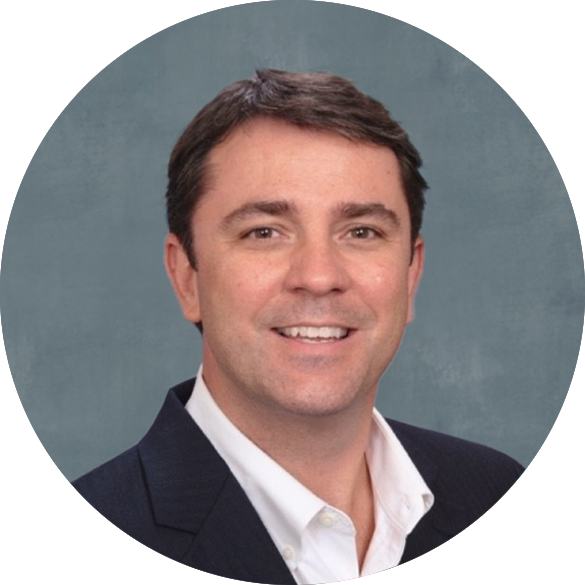7 Experts Weigh In
7 Minute Read – Hospital supply chain and inventory management leaders faced unprecedented challenges in 2020. Now, with several COVID-19 vaccines on the horizon, the 2021 forecast is much rosier.
Still, hospitals must not slow down their supply chain management and inventory management improvement efforts. Continued progress will help your hospital withstand future supply chain disruptions, improve efficiency, and reduce waste.
To help your hospital start off 2021 on the right foot, we asked hospital supply chain management and healthcare inventory management experts to weigh in. Here’s what they said:
#1. Engage in an accurate inventory count and valuation—now
Accurate data and clear visibility into your into your inventory are the foundations of an effective supply chain. As Joseph Pipkins, our associate director of inventory services, says, “If your hospital hasn’t yet taken an inventory count or contracted with an inventory counting service provider, don’t delay. If history has taught us anything, it’s that hospitals need to expect the unexpected so that if a supply chain disruption happens, they have everything in order.”
#2. Implement a plan to stay on top of your inventory, year round
In addition to conducting a formal, annual inventory count, hospitals must continually track and monitor their inventory throughout the year, says Rebecca Addison, our director of inventory operations. “Consistent, standardized inventories will improve efficiency and reduce waste. Also, if you always know what you have on hand—and you can trust that information—you won’t have to scramble to assess your inventory if you encounter a crisis, such as a PPE shortage, as we did in 2020.”
#3. Create contingency plans specific to inventory management
A serious disruption that impacts the supply chain, such as a natural disaster or other event, could happen at any time. Hospitals must take the lessons they learned from the COVID-19 supply chain disruption, and apply those lessons to better prepare for future disruptions, says Melissa Horn, our vice president of inventory sales. “If you’re a large system, make sure you have an enterprise-wide plan regarding how to distribute and allocate resources quickly when necessary,” she says. “In general, you should include sourcing plans for secondary and tertiary resources, and begin forming coalitions with other organizations to enhance resource-sharing when necessary.”
#4. Update your item master
Since the pandemic began, many hospitals have steadily acquired inventory, such as PPE, from non-traditional suppliers that were not part of their GPO contract. These items may not have been updated in their item masters, says Todd Plesko, our CEO. “Adding this information to your item master file will help you determine if you should add these vendors to your procurement cycle and ensure that you have their information on file during a future disruption,” he says. “It will also provide more visibility into supplies and suppliers across your system and make it more easy for you to identify cost-savings opportunities.”
#5. Identify physician preference item (PPI) savings opportunities
When it comes to optimizing inventory management, a key area to focus on is the OR, says Brion Bailey, our chief commercial officer. “More optimal inventory management within the OR can lead to significant margin improvements for hospitals,” he says. “In 2021, focus on increasing physician acceptance of lower-cost supplies by identifying when these items lead to the same or better outcomes. Effective supply chain management technology can help you do this, by producing cost-variance analyses that show how different PPIs affect patient outcomes and length-of-stay metrics.”
#6. Provide efficiency-boosting tools to clinical and inventory management teams
Point-of-use tools that have scanning and charge capture capabilities seamlessly integrated into their supply chain analytics platform (such as smart wands, RFID smart cabinets, point-of-care technologies, and barcode systems) save staff members a significant amount of time, adds Bailey. “These features improve productivity and ensure supplies being used during procedures are captured and accurately recorded in clinical systems which increases OR revenue. It’s a small change to workflows that is easy to incorporate and makes a significant impact.”
#7. Engage and elevate your hospital supply chain and inventory management leaders
In 2020, the healthcare industry learned how critical a role hospital supply chain and inventory management leaders play in ensuring patient and staff safety, says Plesko. “As a result, more and more hospitals are giving these leaders more responsibility. If your hospital hasn’t done that yet, it’s time. Not only can these individuals help your hospital navigate supply chain disruptions, but they can also help improve margins by identifying opportunities to reduce supply chain waste.”
#8. Implement additional safety measures
Product recall notifications are an inevitable component of the hospital supply chain, says Lee Smith, RNFA, BSN, MBA, our vice president of clinical solutions. “Unfortunately, these important notifications don’t always make their way to the appropriate inventory management individuals, and that raises significant patient safety concerns,” she says. “In 2021, every hospital should explore adding point-of-use scanning capabilities that integrate with the FDA’s recall database and flag recalled items.”
#9. Focus on inventory supply standardization
Standardizing supplies increases negotiating power with suppliers, reduces inventory, and decreases variability. Consider investing in a single supply-chain management platform that can provide real-time insights across the entire healthcare enterprise and facilitate standardization, says Bailey. “Supply-chain management tools can help hospitals quickly and easily run reports to identify supply standardization opportunities.”
#10. Use demand forecasting technology
Effective supply chain management technology can help your hospital plan for, better manage, and more quickly recover from supply chain disruptions. For example, incident and peak demand forecasting tools can support inventory planning and management during disruption periods and during periods of normalcy, says Steve Herz, our vice president of products. “If the past year taught us anything, it’s that hospitals must implement demand forecasting technology to ensure high quality patient care.”
Learning from the past
The healthcare industry learned a lot of hard lessons in 2020. Don’t fail to act on them. Now is the time to shore up and improve supply chain and inventory management. Use these tips as a starting point, and reach out to us to learn more about how we can help.
Reach out with questions or learn more about Syft’s Clinical Inventory Services



